Selling Happiness and Security
Photos by Forrest Anderson
As businesses large and small are scrambling to adjust to a challenging new economic environment, some are thriving. Here are some characteristics of businesses that are doing well.
1. They are providing basic needed services that give people security as they shelter at home.
- Delivery services. Amazon is the obvious big winner here, but there are many smaller ones. Many businesses have launched or expanded their home delivery services. Pizza chains with home delivery are expanding and many restaurants, some food suppliers and even farms have added home delivery services or are shipping much more through Amazon or UPS. It seems any vehicle will do - Budget is renting its trucks out for home deliveries and packages are being delivered in a wide variety of vehicles.

An Amazon package on a doorstep.
- Home cleaning services. As people are trying to sanitize their homes more, home cleaning services are expanding even as the demand has dropped for some office cleaning.
- Grocery stores. They have been the big beneficiary of people cooking and eating at home more rather than eating out. Not just large supermarkets have benefitted. Many people are shopping at smaller specialty outlets associated with farms and at farmers’ markets.
- Canned and jarred foods companies, large and small.
- Drive-in theaters have gotten a fresh shot in the arm as a safe way to take your family to the movies. Some drive-in theaters also have hosted weddings at which people watch the bride and groom exchange vows on the big screen while safely in their cars.
- Landscaping and yard care services, garden supply stores and nurseries. People are staying home and gardening rather than traveling. They want their yards to be beautiful. There also has been a gardening boom as people have planted gardens to have extra food amid reports of economic uncertainty and food shortages.
- On-line learning. After struggling for years with lukewarm demand, online learning networks are booming. Not just children but college students and millions of adults have signed up for online courses. The most successful on-line courses have short videos of six minutes or less interspersed with interactive drills and tests, online forums where students can share and online mentoring and tutoring.
- Anything to do with baking and baking supplies. Companies that have been successful in rerouting baking supplies to the consumer market are profiting. For some bakeries and restaurants, repackaging baking supplies and selling them has been a lifeline as they have had to close their normal in-house food services.
- DIY and home improvement suppliers. These range from on-line fabric stores selling sewing supplies to IKEA, which has closed its retail stores but maintained a thriving on-line and pickup service.
- On-line workshops, webinars, blogs, and some suppliers of books and ebooks. As people have spent more time at home, the demand for information that they can consume in various media formats has burgeoned.
- Telehealth. This is a trend that is likely to continue as it is exponentially less expensive than in-person doctors’ consultations.
2. Back to the future. In many ways, the last few months have been like going back ito the pre-1960s when dairy products, meat and vegetables were delivered to homes or people picked up boxes of food that they had ordered at the grocers or from a catalog. Regional supply chains of the type that thrived before supermarkets have boomed during the pandemic. People have returned to growing gardens, eating meals at home, sewing, woodworking, and working at home. In many areas, the air has cleared and wildlife have returned as fewer people are commuting and out and about. Many have reflected on that past world and the reasons why it was organized the way it was, especially the social distancing that characterized it in a pre-polio vaccine world. A key question is whether the changing social practices we are seeing now will morph permanently into such a socially distanced world or will the development of a vaccine mean that COVID-19 becomes a historic blip as we roar back into pre-pandemic crowding. Or, on the other hand, will the hyper-social urban world of the 21st century become a historical blip as we return to time-honored means of limiting contagious disease? As businesses are grappling with this question, mechanisms for operating successfully in the new environment are emerging. At least some of them are expected to stick permanently.
3. Have a flexible, nimble business structure that facilitates quick adjustments to new forms of consumer demand, working arrangements and product lines. Businesses that have shone during the pandemic have had shorter, more flexible and less vulnerable supply chains that could quickly switch from supplying to one market to producing for another one. In pre-pandemic times, many of these businesses served niche markets that were less profitable. However, they have proven to be more stable during the pandemic, as their communities of suppliers and customers have worked together in flexible ways to keep products and profit moving and meet the new needs of consumers.
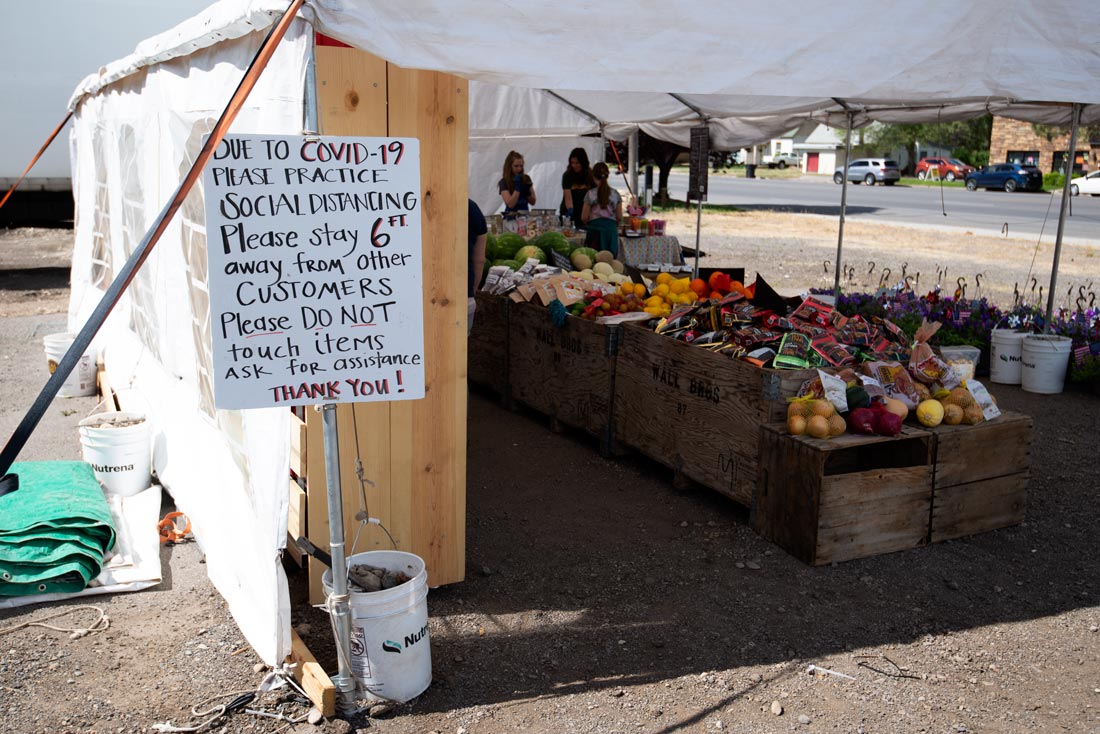
Wall Bros.' diversified approach to selling produce has helped them to prosper during the pandemic. They are planning to expand their outdoor stand on this corner into a permanent store.
Wall Bros. Orchards of Santaquin, Utah, have thrived during the pandemic. The Walls have 600 acres of apple orchards that they sell to large and small retail outlets, including Walmart, the Kroger grocery chain and buyers in other states as well as individual consumers. They also have a real estate business. Their fruit stand on a busy corner sells their own produce plus that of other local suppliers, including thousands of flowers for special occasions such as Mother's Day and July 4th.
Tara Wall, one of the company's owners, says they have also branched out into freeze-dried products. They are planning to build a permanent market on the location where they currently have the outdoor stand shown above.
4. Diversify. Businesses with multiple suppliers and different types of customers have been less disrupted than those with single long supply chains and end customers. While farmers under contract to single large processing plants have struggled if those plants have been forced to close, farmers who supply to both large and small customers have stayed afloat and even thrived. Retail stores with robust on-line communities and diversified supply lines have been able to pivot more quickly to more on-line sales and limit the damage from demand for some products drying up. Those that are part of supply chains that include both small and large suppliers and wholesale and retail suppliers have been disrupted less and have been able to adjust more quickly to new consumer demand.
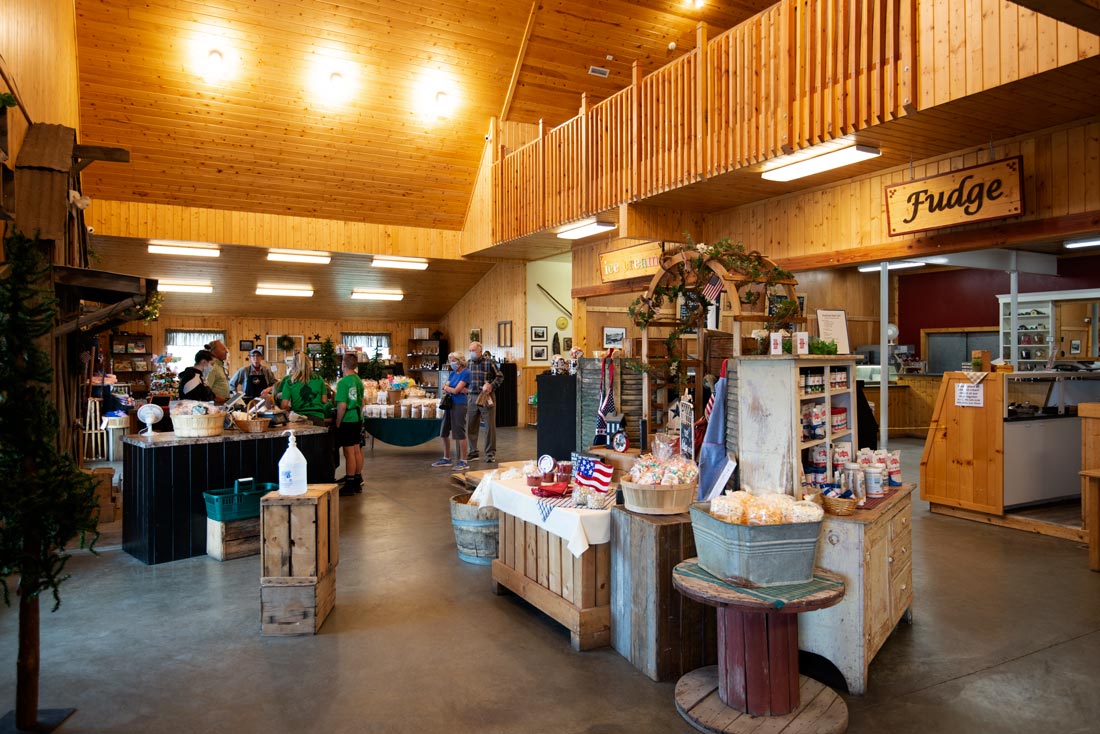
Rowley's Red Barn in Santaquin, Utah, is the quintessential country store. Rowley's sells produce sourced locally and in other locations, meats, cheese, homecanned goods, and a variety of other specialty foods. During the pandemic, they have adjusted their well-known bakery, selling frozen baked goods.
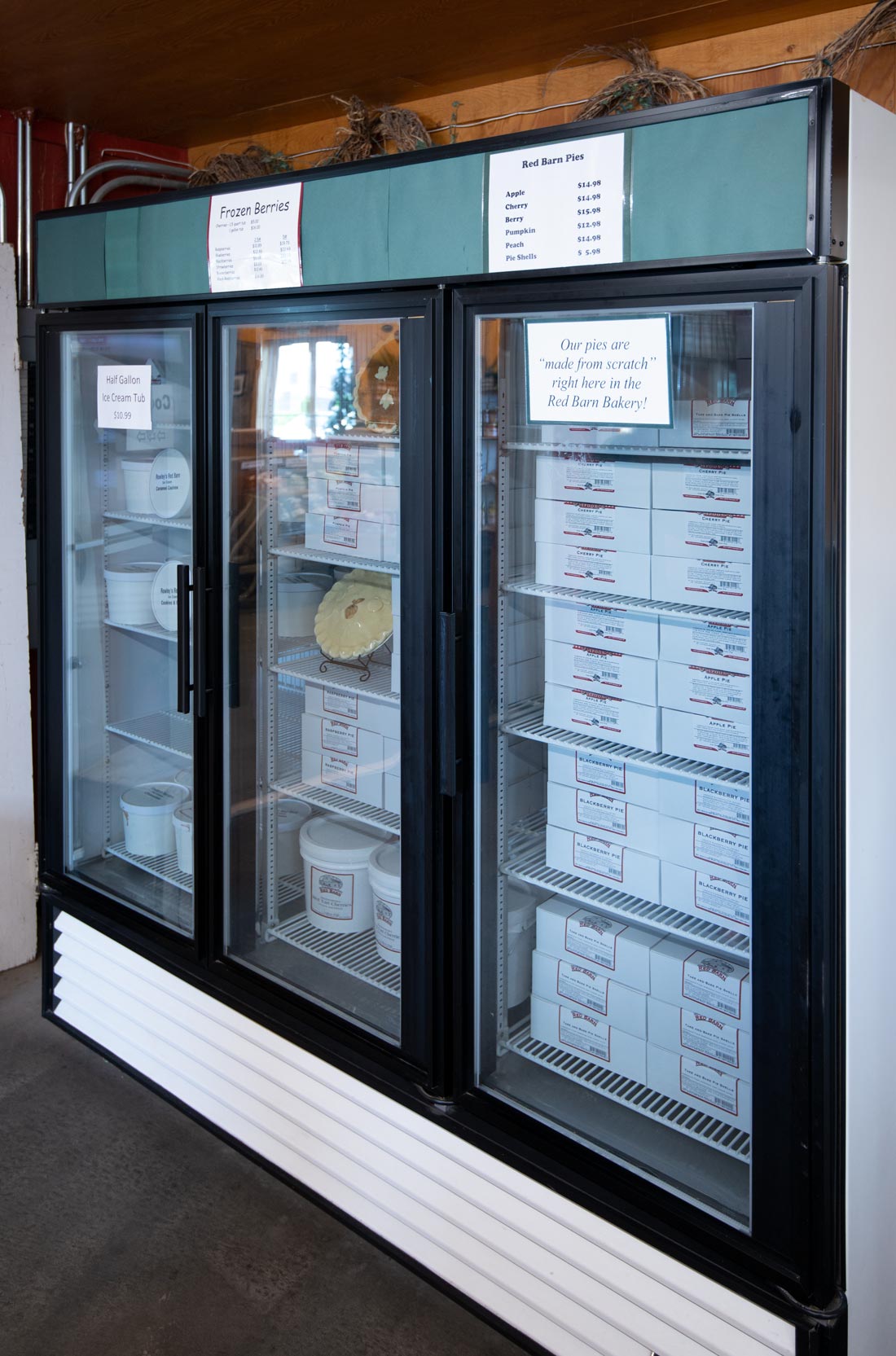
5. Have a solid on-line presence that can quickly ramp up and respond to a crisis. Companies with good e-commerce solutions that enable people to continue to order essential products online without disruption have been in a much more solid position during the pandemic. They have been able to respond quickly to new consumer demand because they weren’t trying to put a basic on-line structure in place at the same time. Some companies that sell expertise, such as personal training companies and aspects of the educational, health and legal industries, have gone on-line with their expertise in blogs, on-line courses, workshops and consulting sessions.
6. Determine where your products fit into the current consumer needs and highlight that as your competitive advantage in the market, then redirect your production to those products that are most needed now.
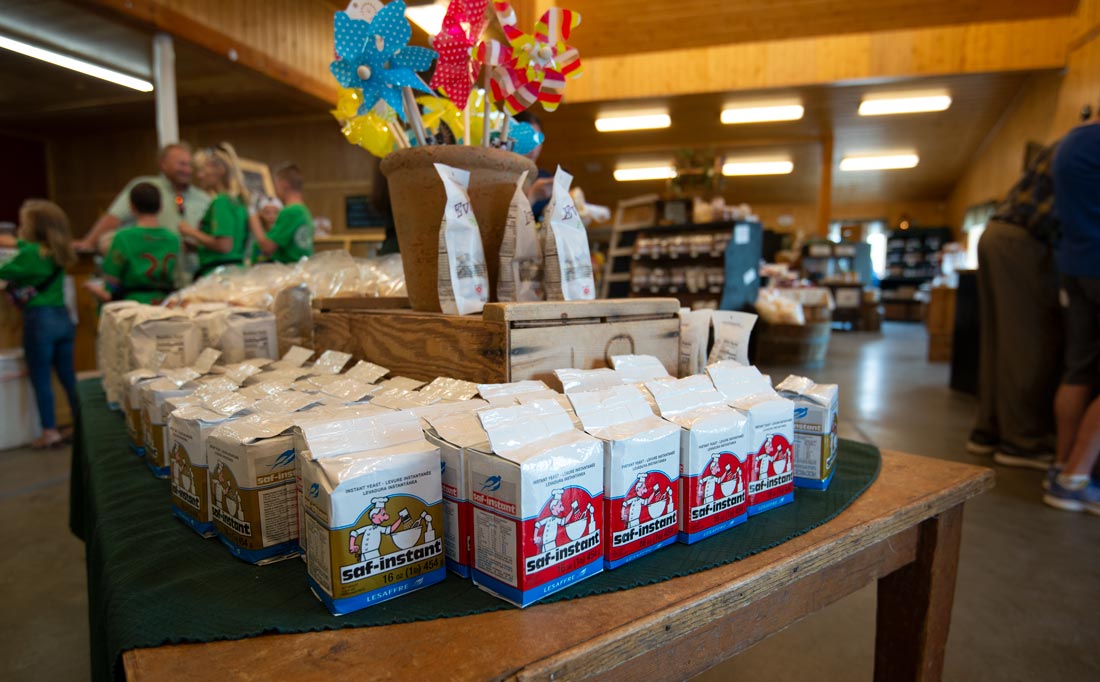
Rowley's Red Barn sells to retail customers yeast and large industrial bags of flour that they would normally use in their bakery.
7. Have a good work-from-home and social distancing plan in place so your workers can switch to remote work or social distancing early and without major disruption to your business or their personal and work lives. Remote work must include safeguards, as workers tend to log more hours when working from home and some feel that they have to available all of the time. Companies that already had good remote work systems in place for at least some workers have experienced a 20 percent increase in productivity in many cases. Some of the major ones such as Twitter and Facebook plan to go to much more remote work in the future. Some state and local governments are encouraging them to do so to cut down on carbon emissions and traffic congestion. Some companies as well as their employees have been stunned how much money they can save on office facilities by having workers work all or partly at home. As a result, remote work is expected to increase in the future. Some companies that were concerned about the effect on their corporate culture of remote work are finding that aspects of their corporate culture can disappear without impacting their workers’ productivity and their bottom line.
8. Budget for a substantial revenue reduction and cut programs that you have been considering cutting for some time. The fashion industry, for example, has long been considering reducing the number of yearly fashion shows, but the pandemic’s tsunami effect on the industry prompted Gucci to reduce its yearly shows from five to two. Other fashion companies are expected to follow suit. Even companies in sectors that are booming are being conservative about expensive ramping up, instead trying to use the resources they do have more wisely as it is uncertain how fickle current consumer demand will be in the future.
9. Make detailed contingency plans for a crisis if you haven’t done so already. For many companies, this includes a way to switch to remote work or implement social distancing procedures quickly.
10. Keep your best employees and customers loyal. Even if you have to have layoffs, try to keep your core of best employees working.
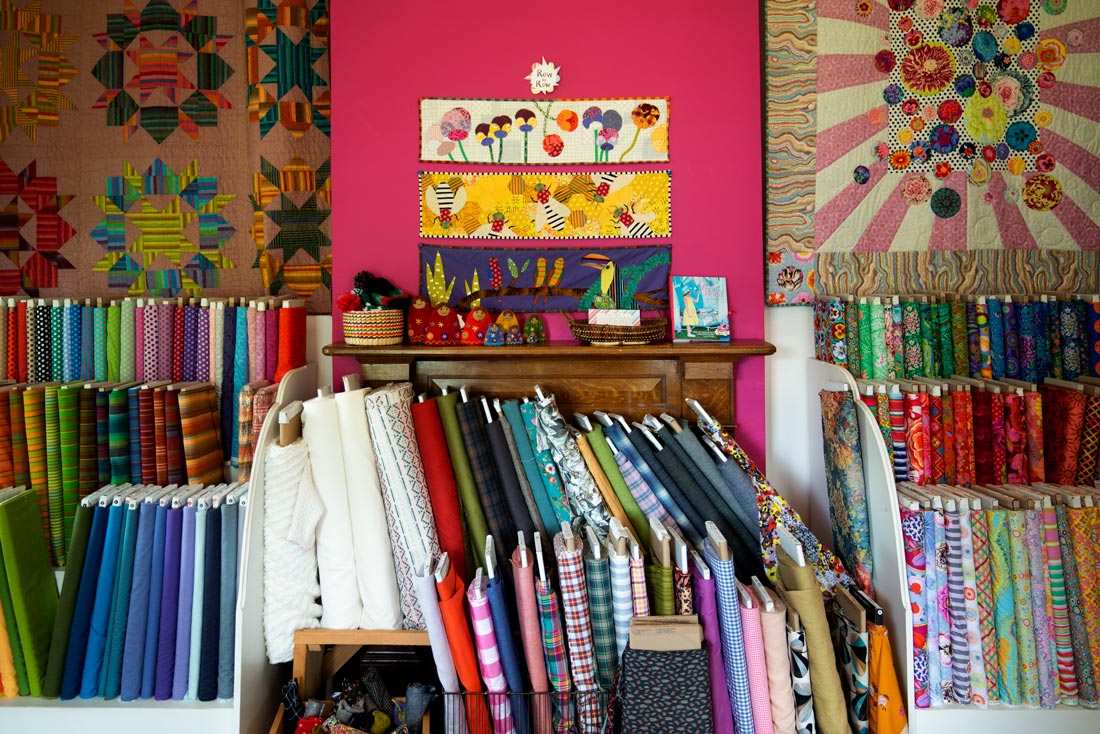
Harmony, a high-quality fabric boutique in Provo, Utah, was hard hit by the pandemic, which forced it to close temporarily. However, the company's strong customer community and loyal employees are enabling it to slowly reopen and recover.
11. Be ethical. Make a strong, consistent effort to protect your employees and customers with institutionalized social distancing, sanitation and cleaning measures as well as reasonable sick leave policies for people who get sick with the coronavirus. Strong ethical standards have business value and that sharpens in a crisis. Some companies such as Home Depot have been criticized online for lax efforts to protect customers and staff during the pandemic, with the difficulty of people being able to socially distance at Home Depot stores having been dubbed the Home Depot Shuffle.
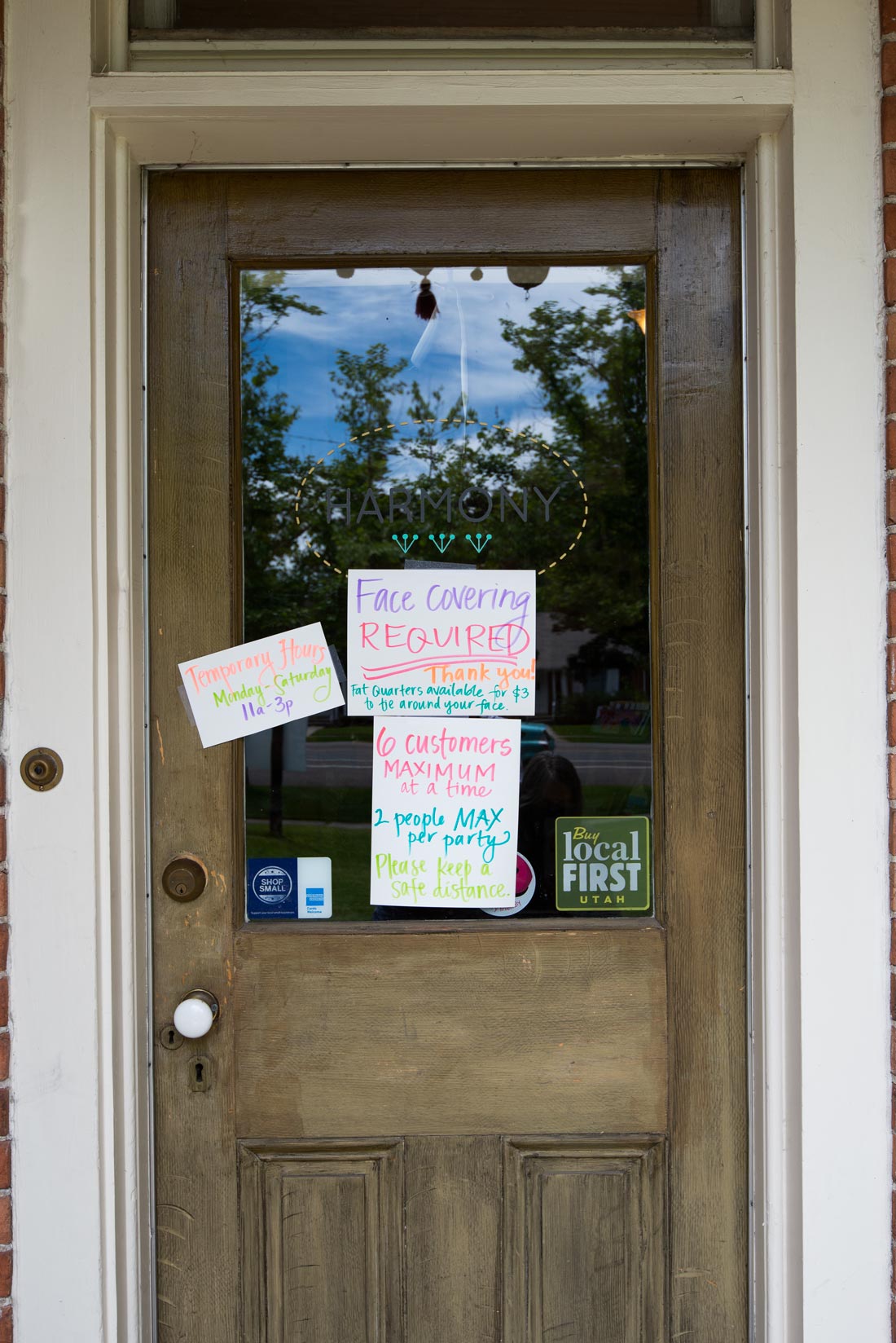 Harmony allows customers in only in small groups with masks. The company's careful attempts to protect its customers and employees are consistent with its past attempts to provide high-quality products and shopping experiences.
Harmony allows customers in only in small groups with masks. The company's careful attempts to protect its customers and employees are consistent with its past attempts to provide high-quality products and shopping experiences.
12. Provide a high level of consistent customer service. Make it easy for people to buy and use your product and support it.
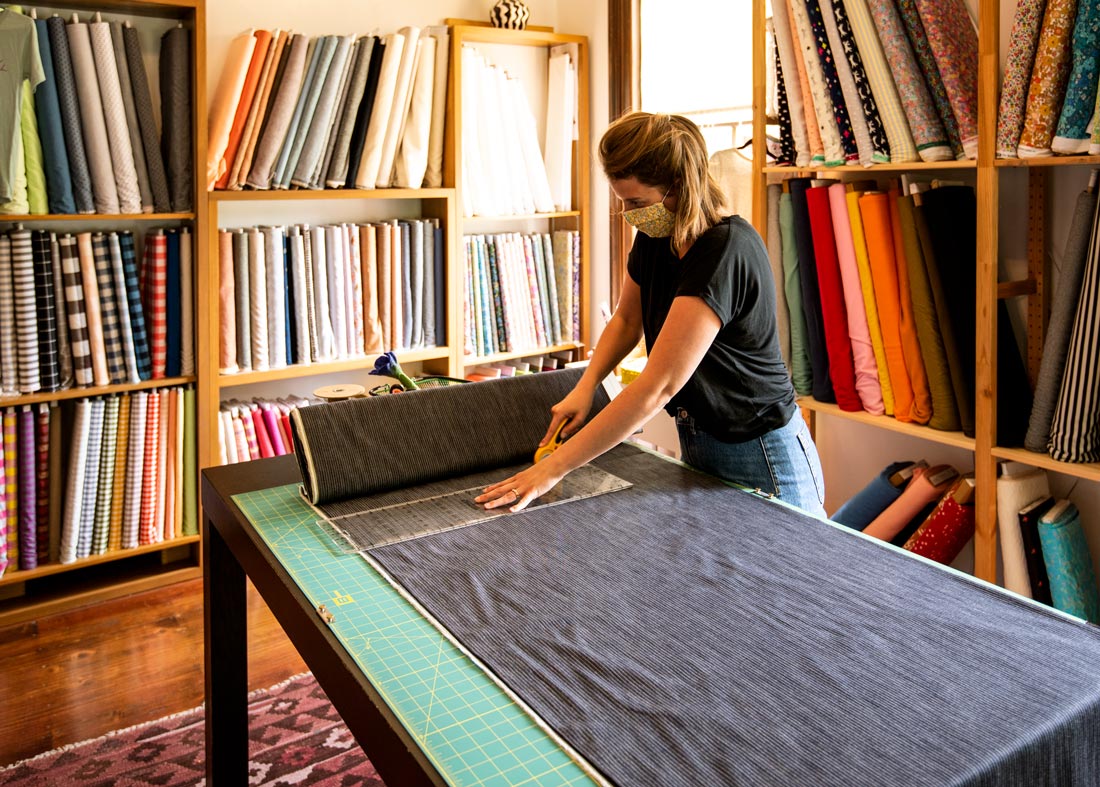
A masked employee cuts fabric for a customer at Harmony.
13. Share what you are doing on social media.
14. Communicate consistently and early with everyone in your company.
- Don’t ignore the anxiety. Make people feel safe talking about their concerns, separate the concerns you can control from those you can’t and outline new ways to approach the things you can control in the current environment.
- Keep talking and redefining the new reality as you go along. Be truthful about job security and giving people an accurate overall picture.
- Don’t waste time on losses. Instead focus on what you can do to succeed in the new environment.
- Accelerate analyzing problems and acting on them. Urgency can help you gain a clearer, deeper understanding of problems and develop the responses needed to succeed. It also unifies people.
- Establish regular 15-30 minute check-ins to share updates, critical new information and adjustments that need to be made.
- Celebrate all successes, including adaptive measures that work.
- Get everyone involved in formulating a recovery plan that creates value under the circumstances.
15. As you work toward recovery, don’t just focus on your business niche. Work on improving management, practices and organization and the ability to move products and services to market quickly.
16. Provide a strong dose of joy to your customers and employees. In a challenging business environment, you are selling not just real value but perceived value. Olson’s Garden Shoppe in Payson, Utah, is a refreshing adventure filled with beautiful plants and cheery and charming signs. This comfort factor has become a major competitive advantage during the pandemic.
“People seem to want to find happiness here,” says owner Chris Olson.

Olson's Garden Shoppe.
The ability to make people feel comfortable and safe in a stressful situation also has been key to the success of Harmon's, a chain of grocery stores in Utah, during the pandemic. The Harmon's store in Lehi, Utah, acted quickly to ensure that people felt safe by equipping employees with masks, closing the dining area and adapting the bakery and salad bars so that people can pick up packaged goods. Then they went a step further with cheery signs that make people feel like Harmon’s is taking care of their safety.

Customers are met with a calming Zen garden display as the enter the store.
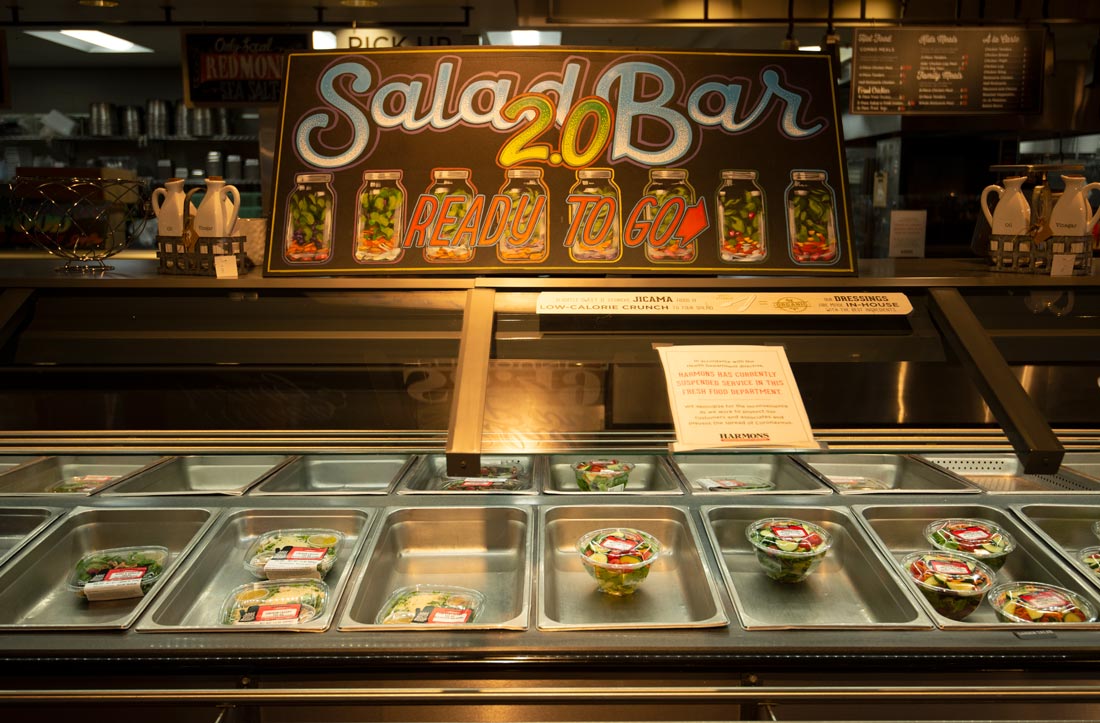
The salad bar and bakery, below, have been revamped with packaged goods.
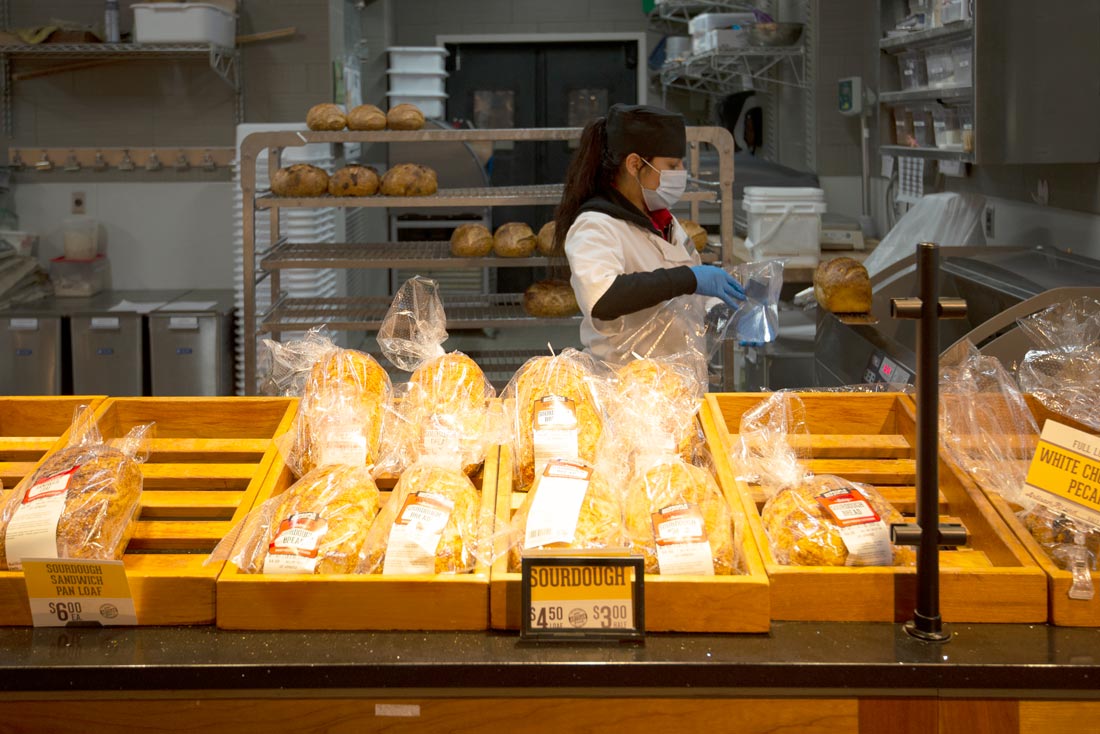

Artwork with cheery sayings at the end of the aisles.
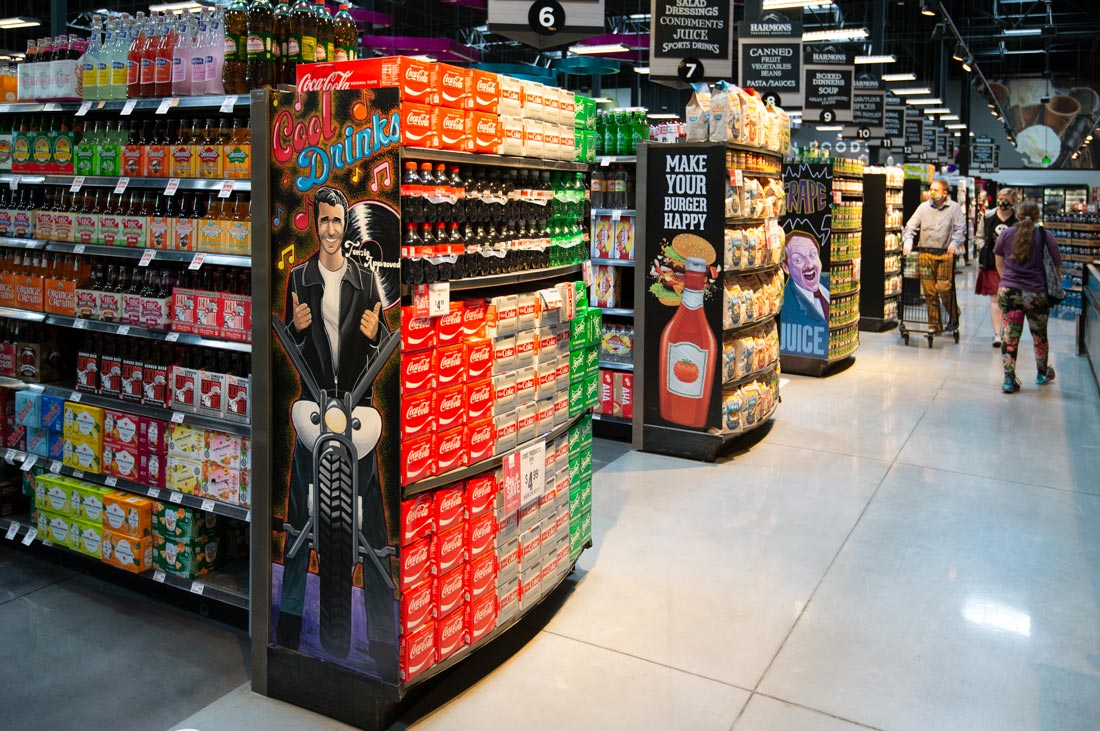
The concern for removing people's anxiety has long been characteristic of Japanese design, where construction sites and other potentially stressful areas have personable, upbeat signs. This is a key aspect of the Japanese cultural characteristic “kawai,” which is translated in English as “cute” but is often used in Japan to cloak unfamiliar products or uncomfortable situations in humor or charm to help alleviate customers' anxiety. In the midst of a pandemic, this approach needs to take center stage in business design and planning.
Check out these related items

Let’s Get to Work - From Home
Remote work is one of the best ways to limit the coronavirus and keep the economy going. Here's a guide to how to work from home.

What does the future hold?
Dozens of experts’ analysis of long-term trends can help us identify the challenges and opportunities amid the COVID-19 pandemic.

Small Business Meets Fortune 500
This case study on business design highlights a small business that provides tax director services for Fortune 500 businesses.
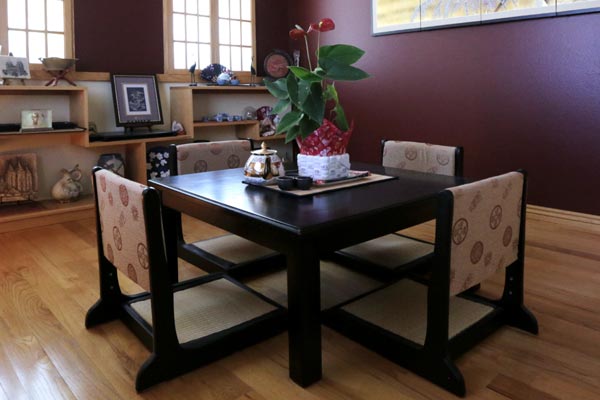
Private Paradises Amid Adversity
Sheltering at home has been accompanied by an outpouring of creativity that can help us cope with adversity and shape our future.
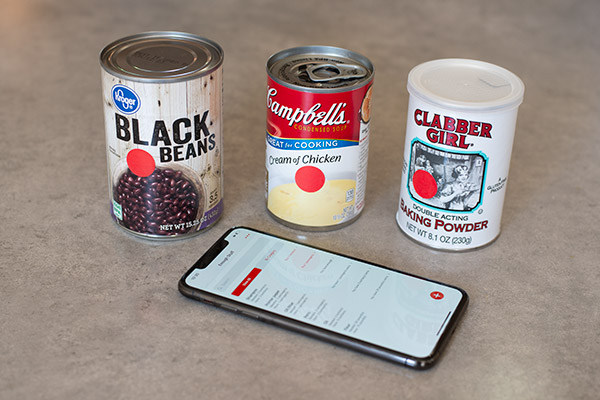
Inventory App and Sticker Dots
Use sticker dots and an easy inventory app, Enough Stuff, to keep track of your food supplies, toiletries and other stuff of all kinds.

Home is Where the Vacation is
Vacationing at home looks to be the main travel trend for the near future. Here are some ways to enjoy it.
